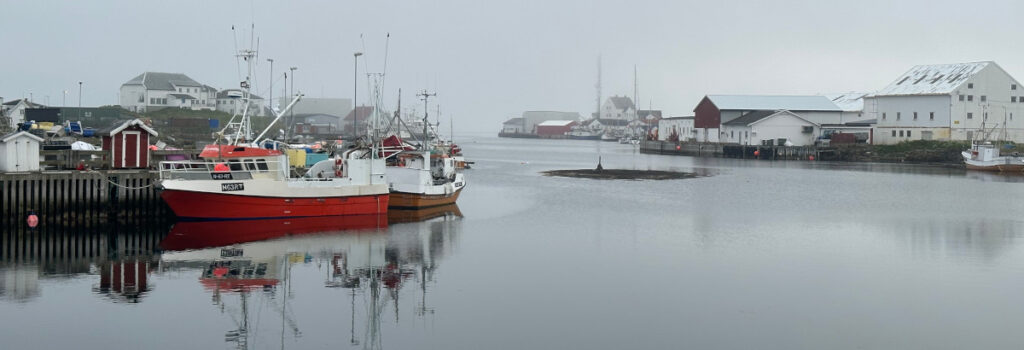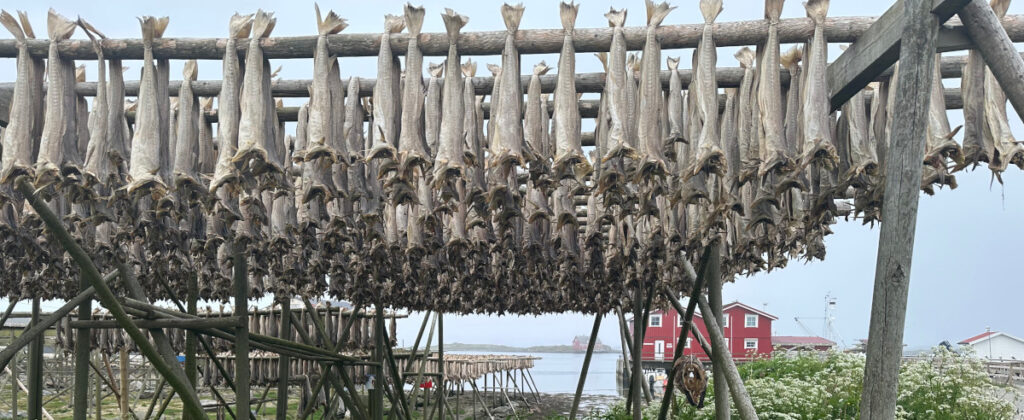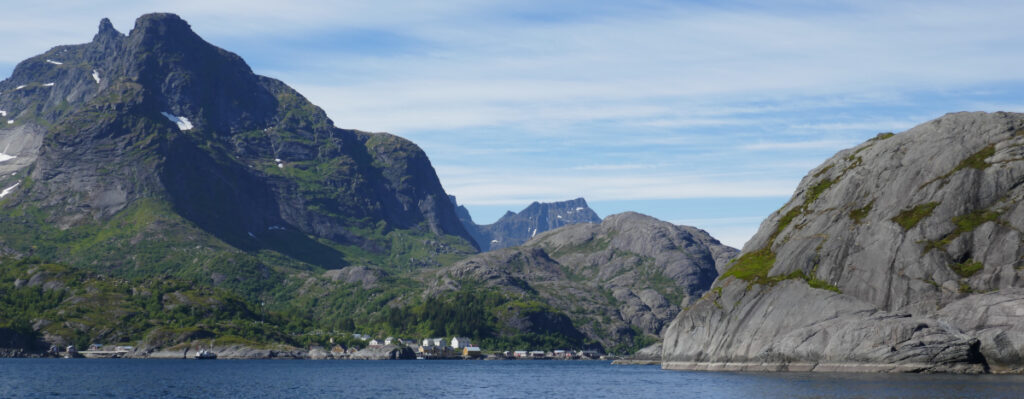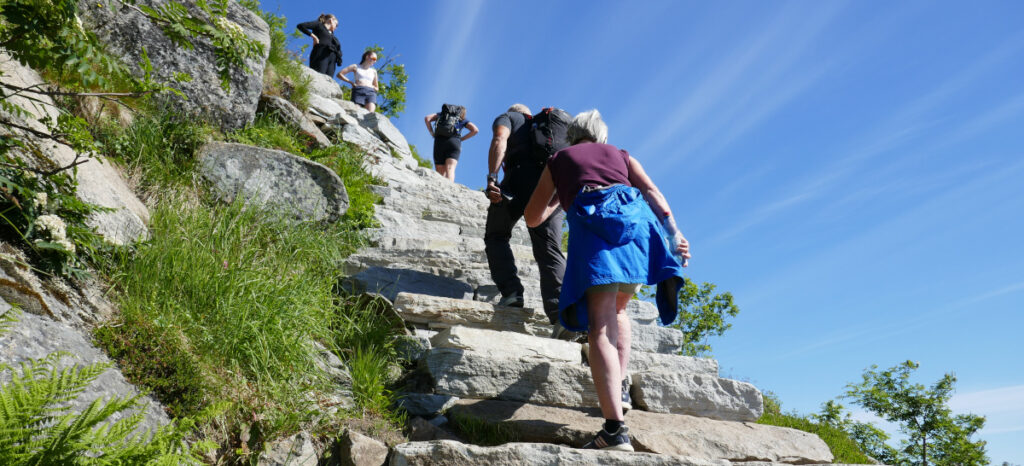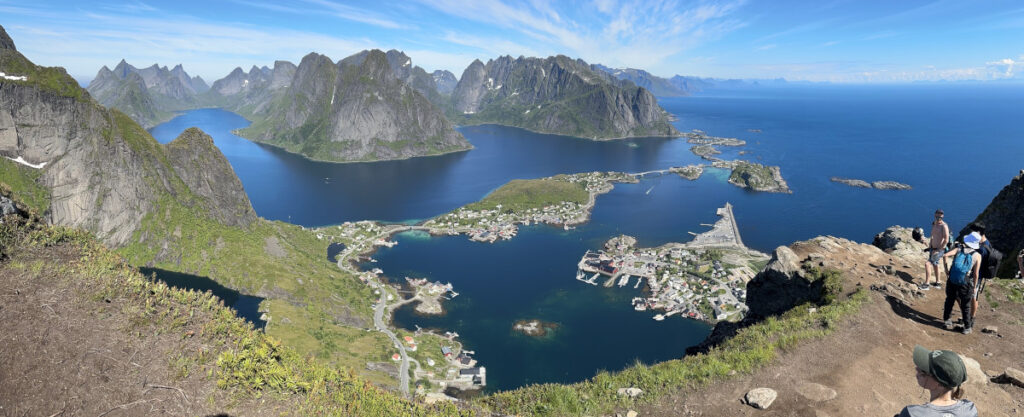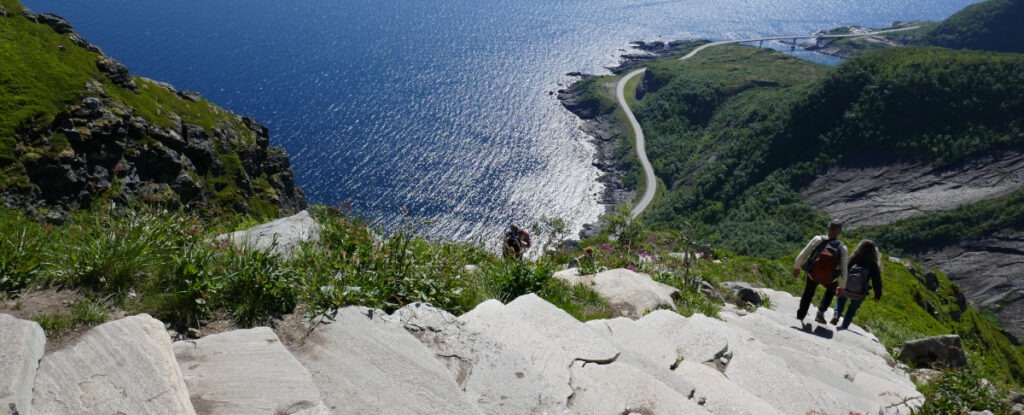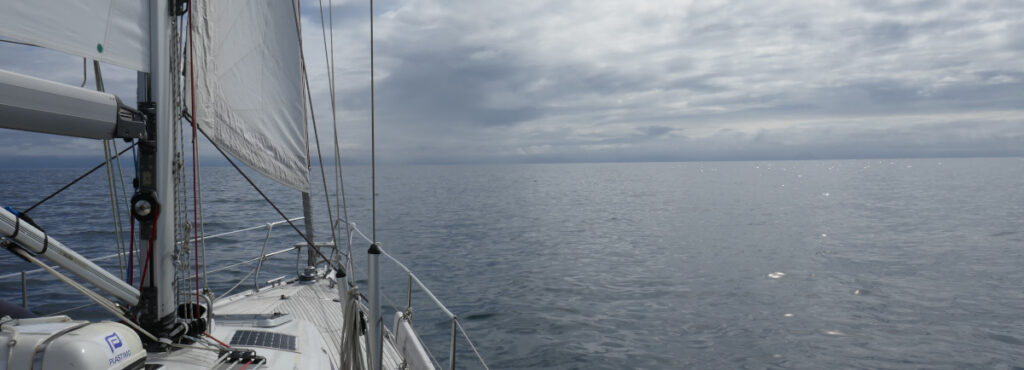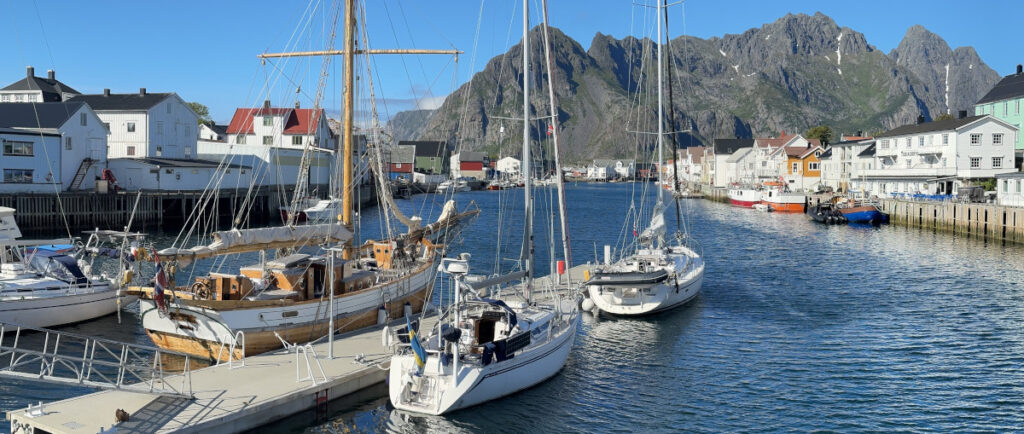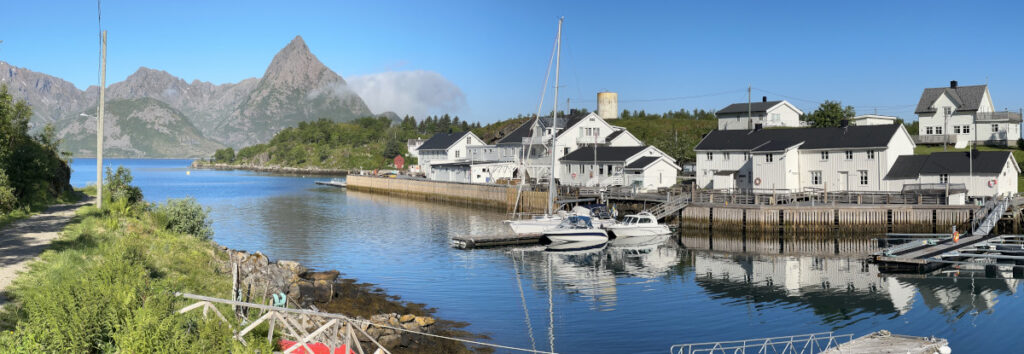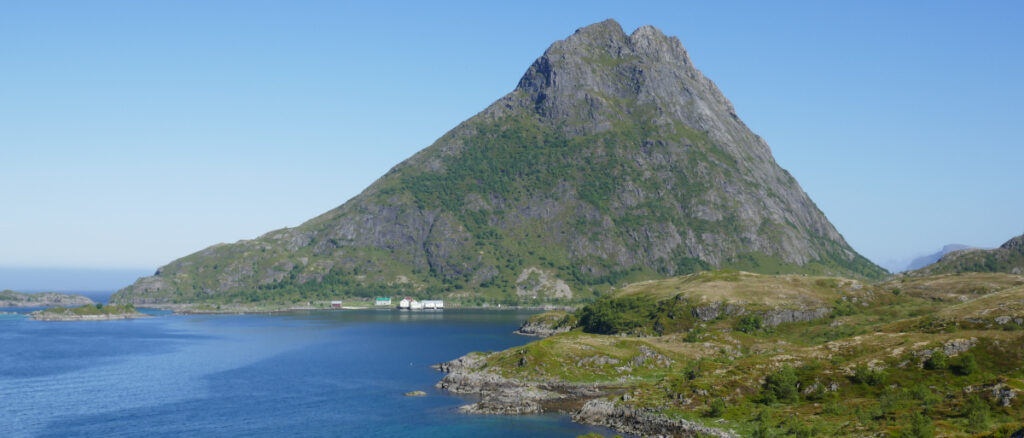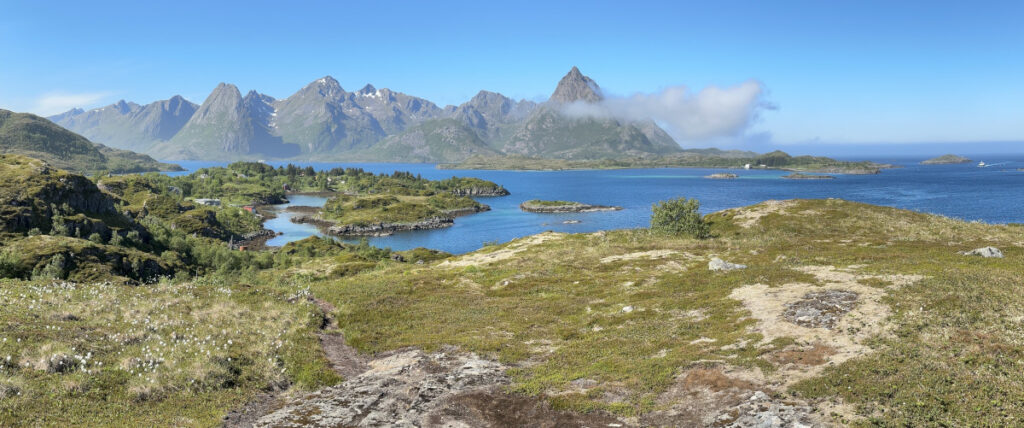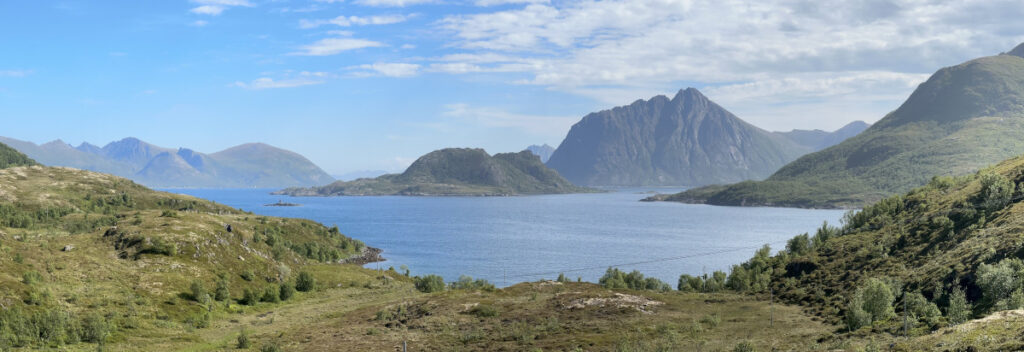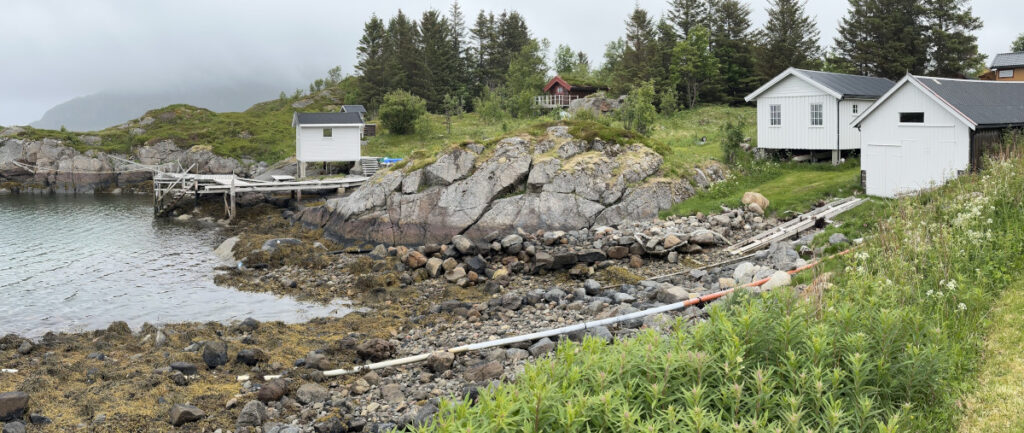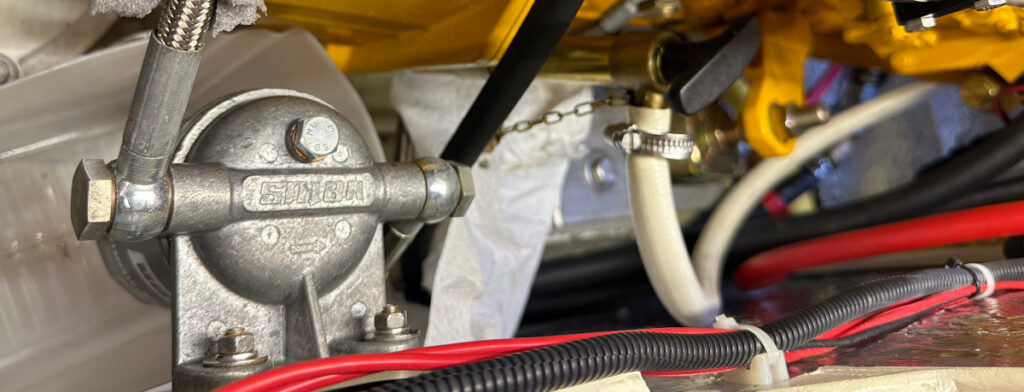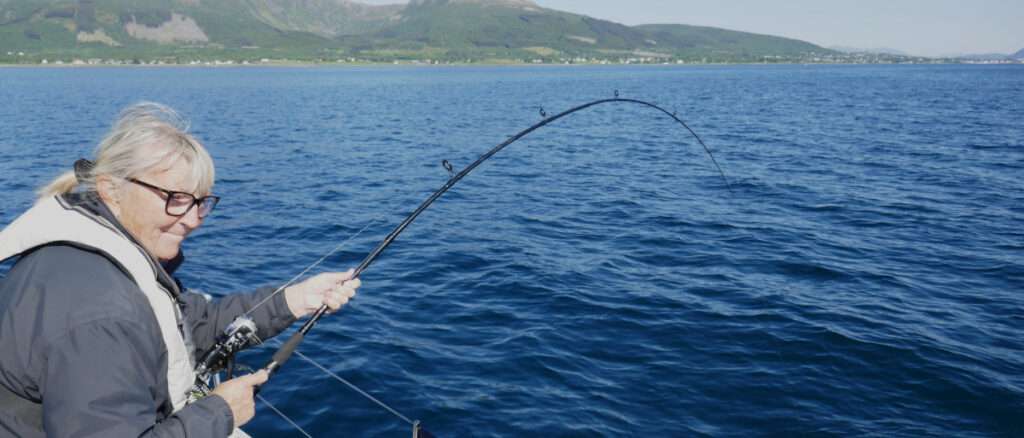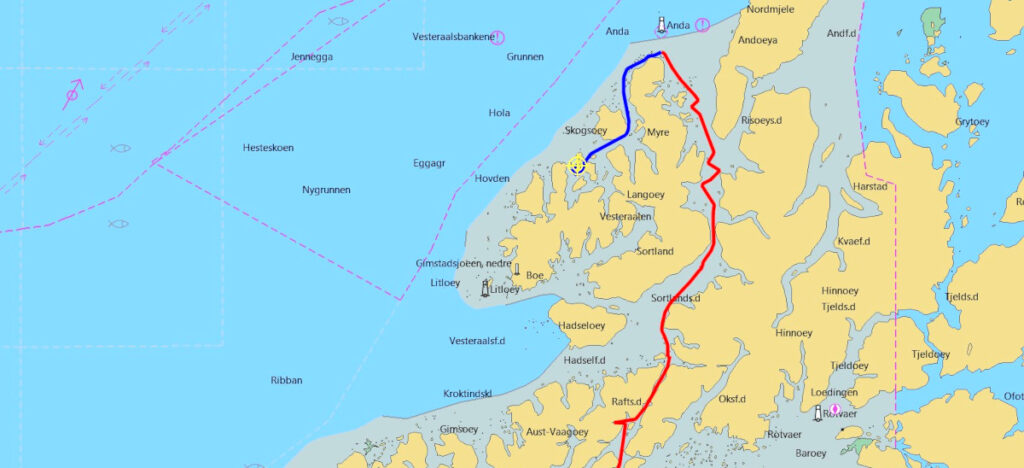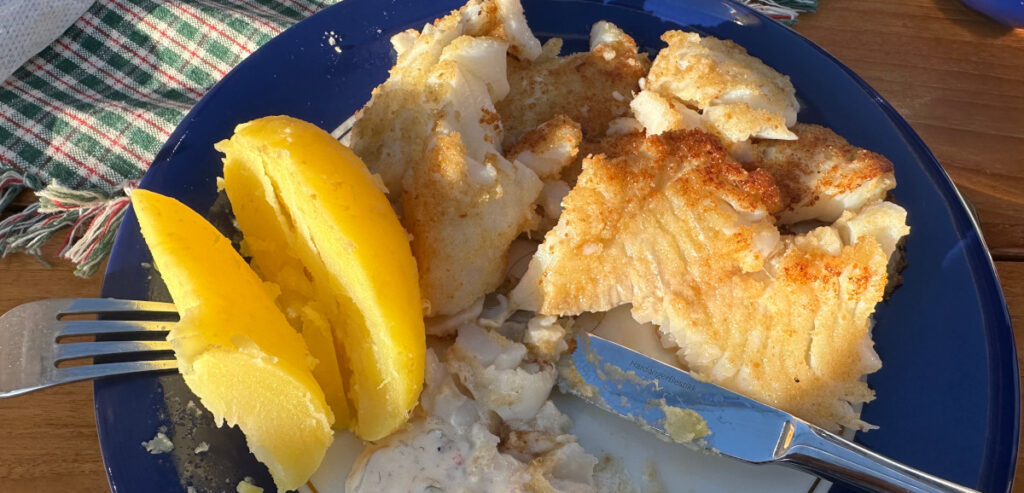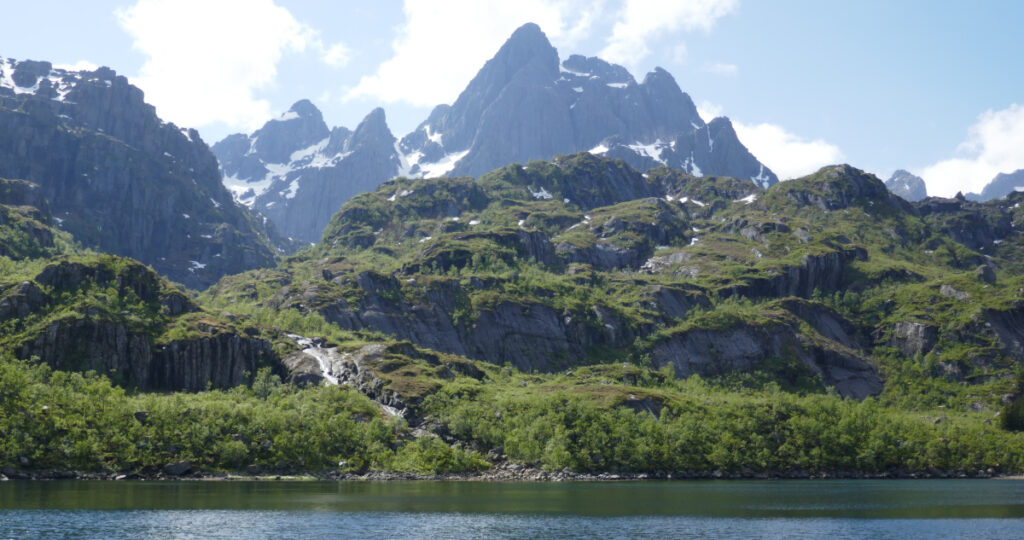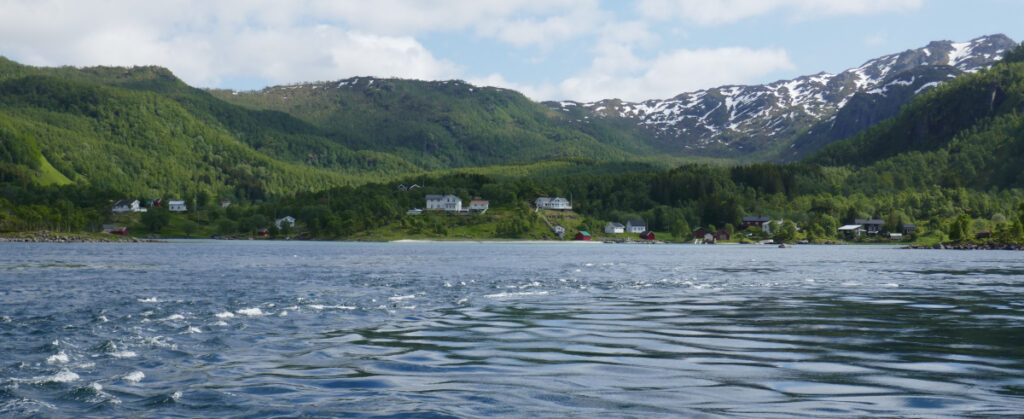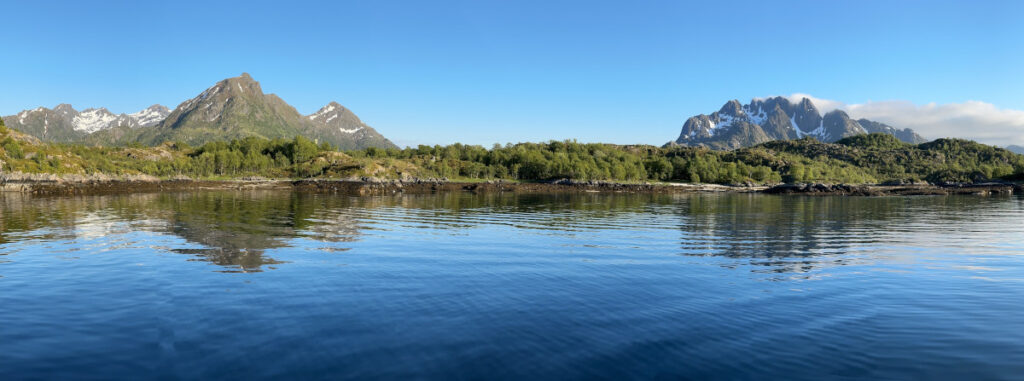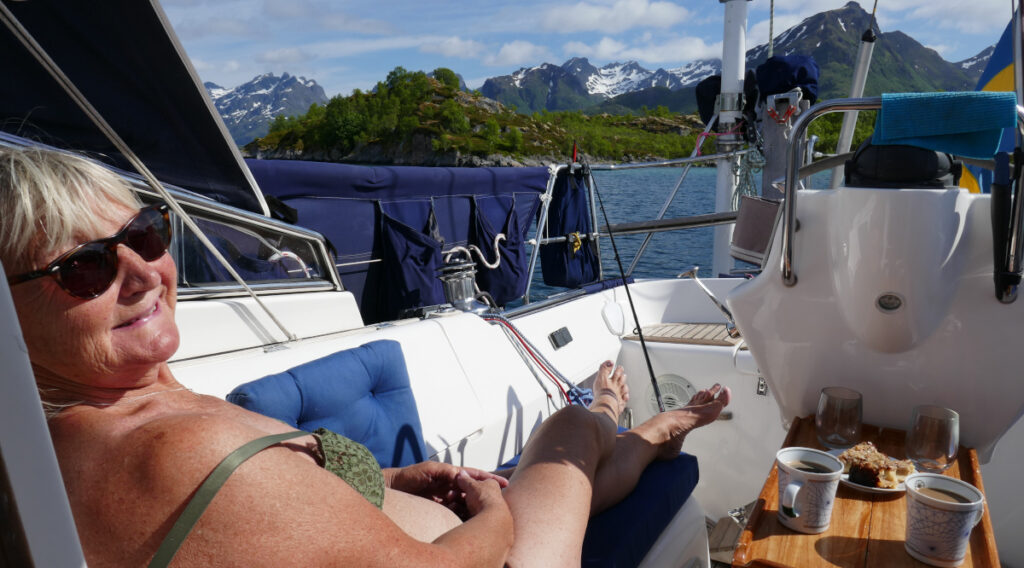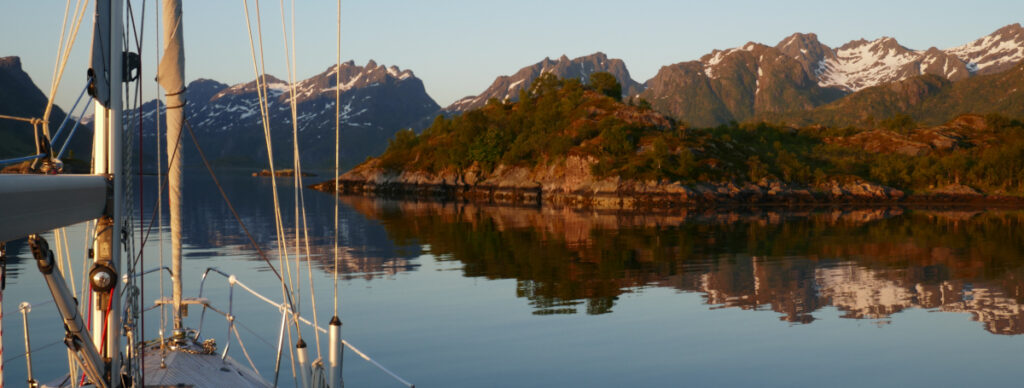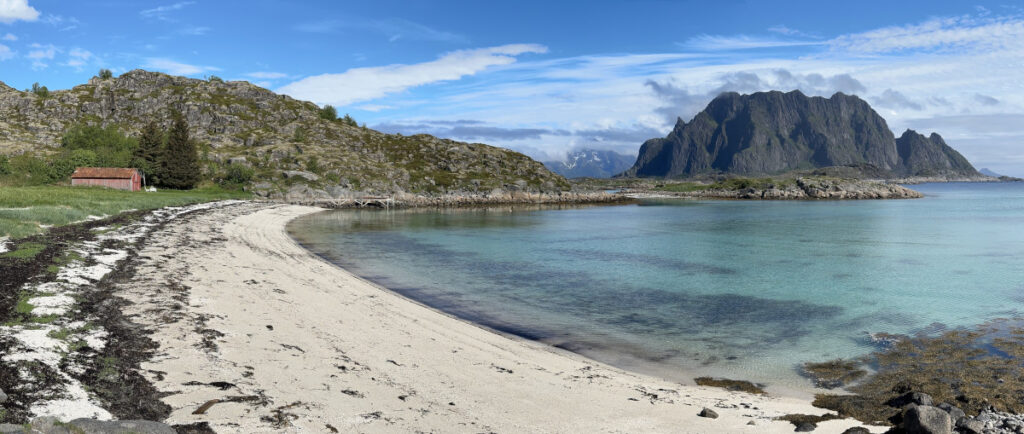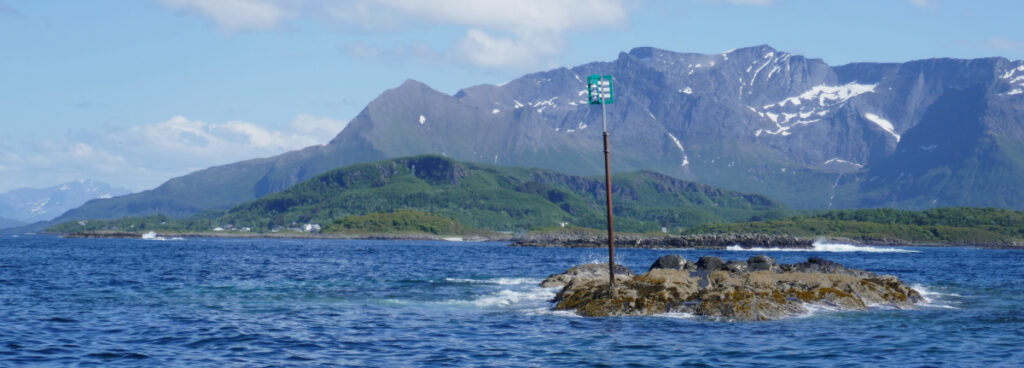We left Rost in much better visibility then on our arrival. With it’s shark fin shaped mountain in clear view.

There was not much wind, so we motored towards the coast. It was a splendid day with clear blue skies and very good visibility allowing us to sea both the costal mountains and the Lofoten islands in the distance. As we approached the coast, we saw the lion on Rodoy (Rødøyløva) laying looking out to sea.

We picked up som wind the last hours and were able to sail in under the lighthouse on Kalsholmen. We had used the glacier Sortisen to steer by for a long time and it was still prominent as we sailed to the small harbour of Bolga.

Bolga was a pleasant island. It has nice walks but, time did not allow. The restaurant is run by a chef from Gothenburg. We had a long chat with him, and he presented us to a sample of a very nice Myken whiskey. The drinks as well as the first night on the dock were free of charge.
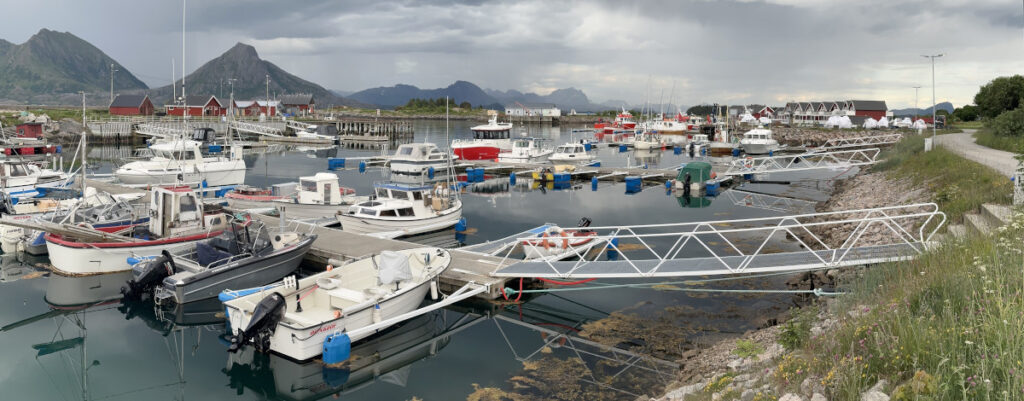
We availed ourselves of the easily accessible fuelling station, with the lowest price (for us) so far in Norway, before we left the following day.





